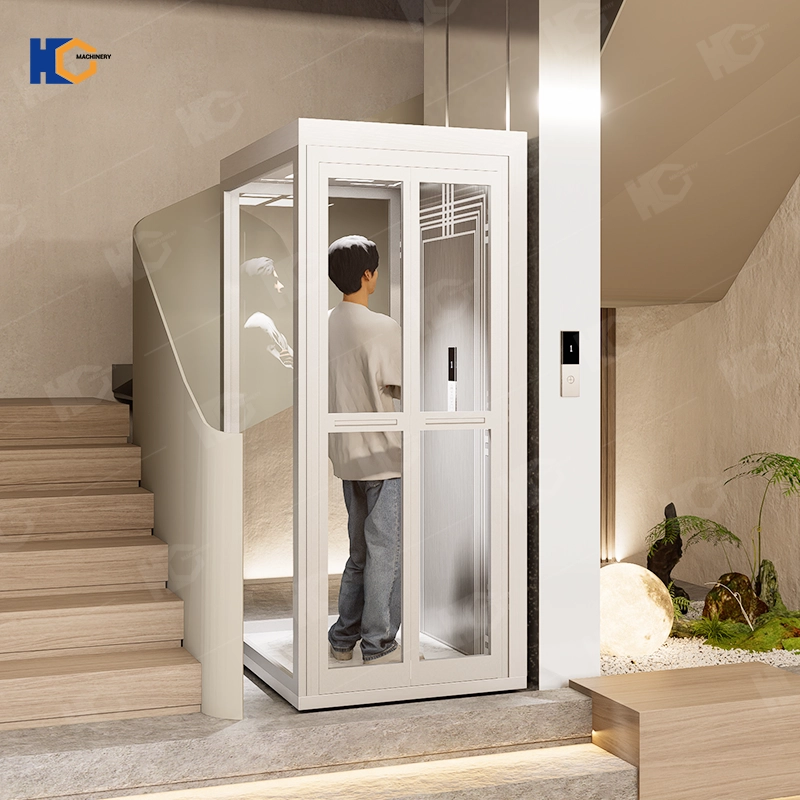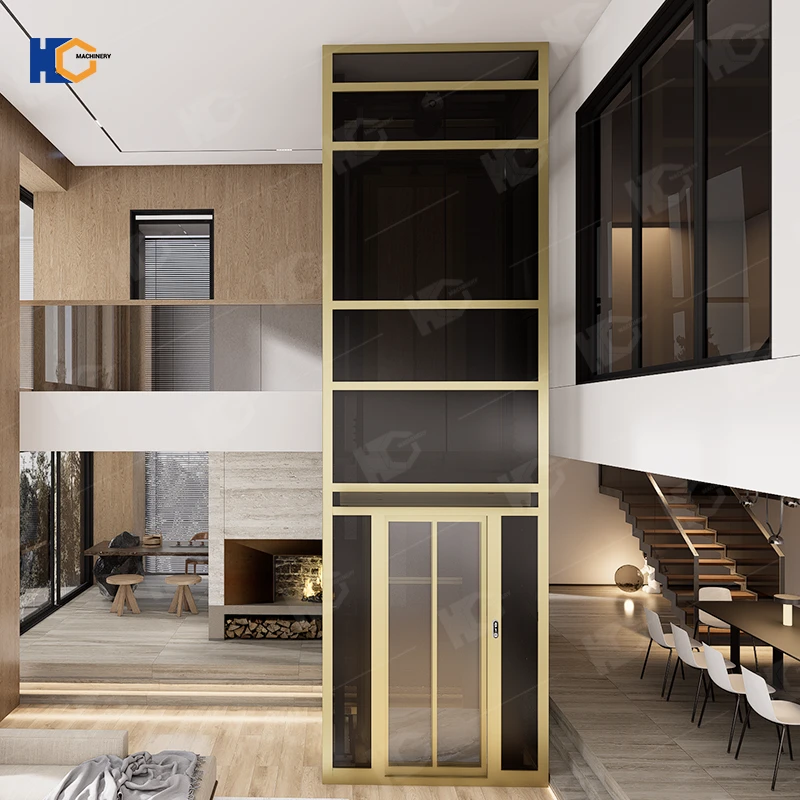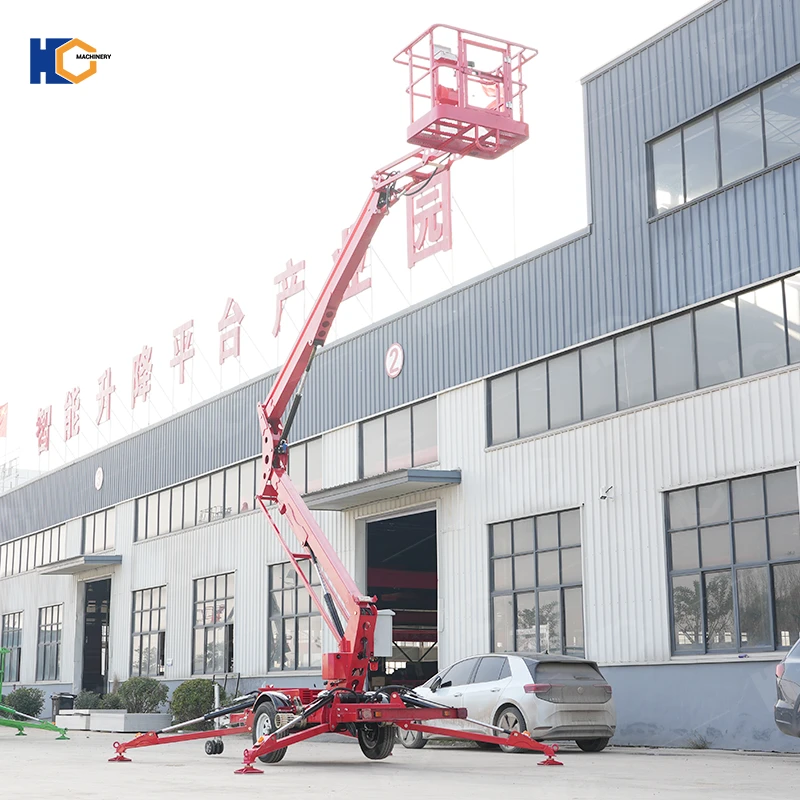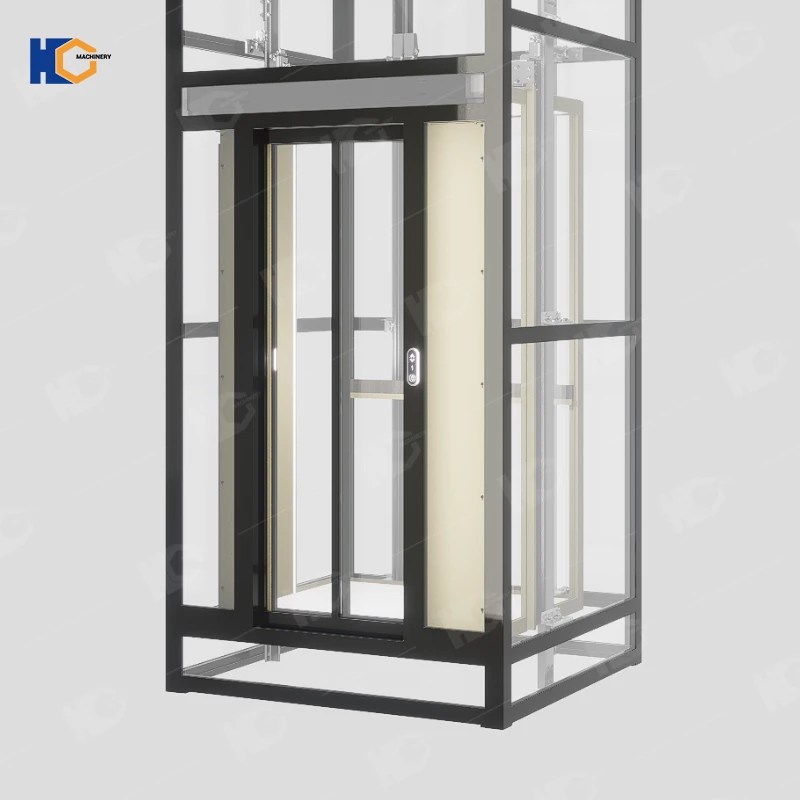Introduction
In recent years, home accessibility solutions have become increasingly popular, particularly among elderly individuals, people with limited mobility, and homeowners who want to add convenience and property value. One innovation that has gained significant attention is the shaftless elevator. Unlike traditional elevators, shaftless elevators are compact, space-saving, and require minimal construction work, making them a practical option for residential and light commercial use.
This article explores what a shaftless elevator is, how it works, its benefits and limitations, current market data, and why brands like Huichuang Lift (Jinan Huichuang Machinery Manufacturing Co., Ltd.) are emerging as leaders in this sector.
What is a Shaftless Elevator?
A shaftless elevator is a type of residential or small commercial lift that does not require a conventional elevator shaft. Instead, it travels between floors using a self-contained guide rail system. This eliminates the need for deep pits, overhead rooms, or extensive structural modifications.
Key features include:
Compact design, usually fitting into spaces as small as a wardrobe.
Operates at low speeds (typically 0.15–0.3 m/s).
Designed for 2–4 floors, though some models support up to 5.Ex:Shaftless home elevator 3 floors
Powered by hydraulic, traction, or pneumatic systems.
This makes shaftless elevators a cost-effective and space-saving solution for homeowners.
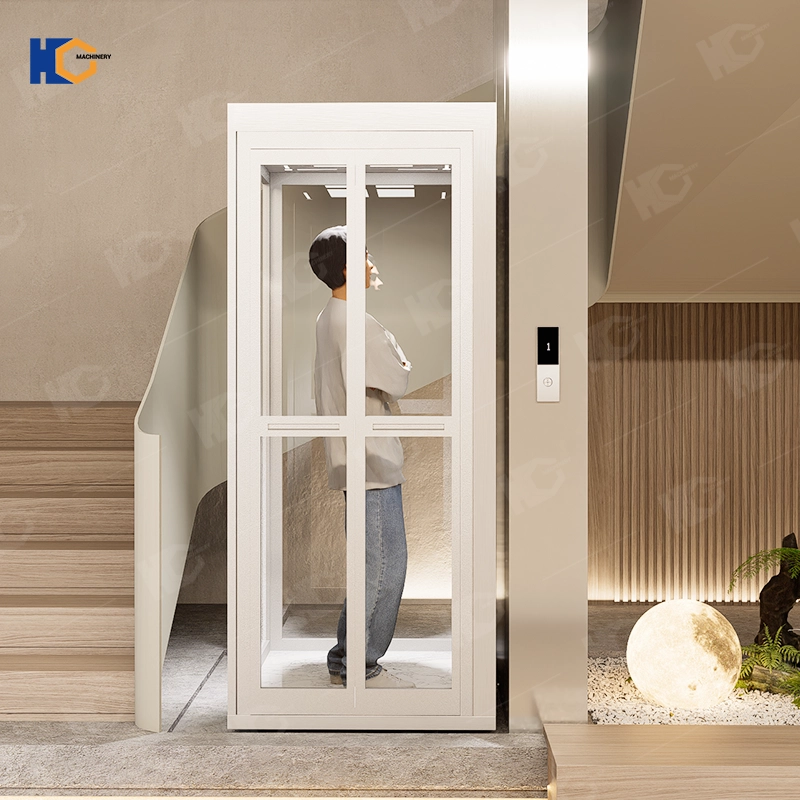
A shaftless home elevator does not require a traditional enclosed shaft structure (i.e., there is no need to build or install a closed space formed by a separate wall). Its operation relies on its own steel structure frame or guide rail system directly fixed to the building structure (such as walls and floor slabs), and the car operates in an open or semi-open space.
Why are Shaftless Elevators Becoming Popular?
According to Market Research Future (MRFR), the global home elevator market was valued at USD 15.2 billion in 2022 and is projected to reach USD 25.3 billion by 2030, growing at a CAGR of 6.5%. A large portion of this growth is attributed to shaftless elevators due to their affordability and easy installation.
Table 1: Global Home Elevator Market Trends
| Year | Market Size (USD Billion) | CAGR | Key Growth Drivers |
|---|---|---|---|
| 2022 | 15.2 | - | Aging population, smart homes |
| 2025 | 19.4 | 6.5% | Accessibility needs, luxury housing |
| 2030 | 25.3 | 6.5% | Compact shaftless designs |
Technical Specifications of Shaftless Elevators
A typical shaftless elevator is designed with residential use in mind. Its specifications focus on safety, compactness, and efficiency.
Table 2: Common Shaftless Elevator Specifications
| Parameter | Typical Value |
|---|---|
| Load Capacity | 250–400 kg (2–4 persons) |
| Max Travel Height | 7–10 meters (up to 5 floors) |
| Speed | 0.15–0.3 m/s |
| Minimum Pit Depth | 0–100 mm |
| Door Options | Swing door, sliding door, glass panels |
| Power Consumption | 1.5–2.5 kW |
| Safety Features | UPS, emergency stop, light curtain, speed governor |
Benefits of Shaftless Elevators
Shaftless elevators provide many advantages over traditional models:
Space Efficiency – No shaft or machine room is required.
Cost Savings – Installation costs are significantly lower (30–40% cheaper).
Aesthetic Design – Glass or stainless steel cabins blend with modern interiors.
Safety Features – Equipped with advanced safety sensors and backup systems.
Energy Efficiency – Consumes less energy compared to traditional lifts.
Accessibility – Perfect for elderly or disabled family members.
Challenges and Considerations
While shaftless elevators are practical, they also come with limitations:
Weight Capacity: Limited to 2–4 passengers.
Speed Restrictions: Slower than commercial elevators.
Travel Distance: Typically up to 5 floors only.
Resale Value: Not all buyers may prioritize home elevators.
Table 3: Pros and Cons of Shaftless Elevators
| Aspect | Advantages | Limitations |
|---|---|---|
| Space | Compact, no shaft | Limited cabin size |
| Cost | Affordable | May need reinforcement in some houses |
| Safety | Multiple sensors | Lower speed |
| Accessibility | Great for elderly | Limited load capacity |
| Installation | Quick (2–3 days) | Floor cutting required |
Shaftless Elevators vs Traditional Home Elevators
To better understand their value, let’s compare shaftless elevators with conventional home elevators.
Table 4: Shaftless vs Traditional Elevators
| Feature | Shaftless Elevator | Traditional Elevator |
|---|---|---|
| Space Requirement | Very compact | Requires shaft + machine room |
| Installation Time | 2–3 days | 1–3 months |
| Cost | $15,000–25,000 | $30,000–50,000 |
| Max Floors | Up to 5 | Up to 15+ |
| Maintenance | Low | Moderate to high |
| Target Use | Homes, small offices | Residential & commercial |
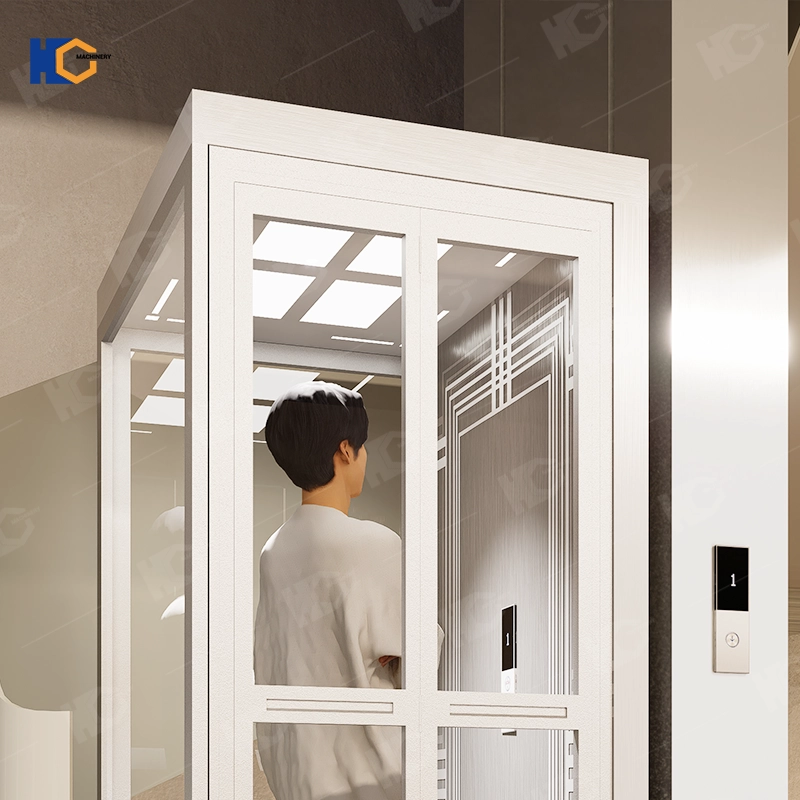
The shaftless home elevator eliminates the need for dedicated hoistway civil engineering, saving space and renovation costs. It is suitable for families who cannot or are inconvenient to renovate the hoistway (such as retrofitting old houses and small apartments).
Global Demand and Demographics
Demand for shaftless elevators is driven by demographic changes and lifestyle upgrades.
Aging Population: By 2030, the UN projects that 1 in 6 people will be over 60 years old, increasing demand for home mobility solutions.
Urban Housing Trends: Compact housing in Asia and Europe makes shaftless elevators attractive.
Luxury Homes: In North America, home elevators are seen as a premium feature, increasing property value by up to 10%.
Table 5: Demand Drivers by Region
| Region | Main Drivers |
|---|---|
| North America | Aging population, luxury housing |
| Europe | Accessibility laws, compact designs |
| Asia-Pacific | Urban housing, affordability |
| South America | Cost-effective accessibility |
| Middle East | Luxury housing boom |
Case Study: Hydraulic Shaftless Elevators
Among all types, hydraulic shaftless elevators are the most popular due to smooth operation and reliability.
For example, Huichuang Lift’s hydraulic home elevator features:
Load capacity: 400 kg
Max floors: 5
Speed: 0.3 m/s
Minimum pit depth: 0 mm
Cabin options: Stainless steel, etched glass, or tempered glass
Safety devices: UPS, light curtain, speed governor, tensioner, bottom safety sensor
6 door opening directions for flexible installation
These specifications align with international certifications such as CE, ISO, and ASME A17.1, ensuring compliance with global safety standards.
Huichuang Lift: A Trusted Shaftless Elevator Manufacturer
Jinan Huichuang Machinery Manufacturing Co., Ltd. (Huichuang Lift), located in Jinan, Shandong—the “Hometown of Hydraulic Lifting Platforms”—is a trusted name in lifting solutions.
Why Choose Huichuang Lift?
Expertise: 15+ years of R&D and manufacturing experience.
Production Capacity: 200+ staff, multiple workshops, independent R&D lines.
Global Reach: Serving markets in North America, South America, Europe, and Southeast Asia.
Quality Assurance: CE, ISO, and ASME A17.1 certifications.
Customer Service: OEM services, customized solutions, and comprehensive after-sales support.
Product Range: Hydraulic aerial work lifts, home elevators, boom lifts, and more.
With a commitment to safety, accessibility, and cost-effectiveness, Huichuang Lift is actively recruiting global agents and cooperating with international partners.
Conclusion
A shaftless elevator is a modern solution to improve accessibility and convenience in homes and small buildings. With advantages like compact design, cost savings, and safety features, it is becoming a preferred choice worldwide.
As research data shows, the global home elevator market is expanding rapidly, and shaftless elevators are at the forefront of this growth. Brands like Huichuang Lift are not only delivering reliable hydraulic home elevators but also shaping industry standards with international certifications and global service networks.
For homeowners seeking affordable, safe, and stylish accessibility, or for businesses looking to partner with a leading elevator manufacturer, shaftless elevators from Huichuang Lift represent the future of mobility solutions.
FAQ About Shaftless Elevators
1. What is the difference between a shaftless elevator and a traditional elevator?
A shaftless elevator does not require a dedicated shaft or machine room, making it compact and easy to install in homes. Traditional elevators, by contrast, need extensive structural modifications, deeper pits, and higher costs. Shaftless elevators are best for low-rise residential buildings.
2. How much does a shaftless elevator cost?
The average cost of a shaftless home elevator ranges from $15,000 to $25,000, depending on cabin design, travel height, and safety features. This is about 30–40% less than traditional home elevators.
3. Are shaftless elevators safe to use?
Yes. Modern shaftless elevators, like those from Huichuang Lift, are equipped with advanced safety features including UPS power backup, emergency stop buttons, light curtains, speed governors, and bottom safety sensors. International certifications (CE, ISO, ASME A17.1) further ensure safety compliance.
4. How many floors can a shaftless elevator serve?
Most shaftless elevators can travel between 2 to 5 floors (up to 10 meters). Huichuang Lift’s hydraulic home elevators support up to 5 floors with a load capacity of 400 kg, ideal for family use.
5. What are the installation requirements for a shaftless elevator?
Shaftless elevators require minimal construction. Typically:
Minimum pit depth: 0–100 mm
Headroom clearance: Low compared to traditional lifts
Installation time: 2–3 days for most models
This makes them suitable for retrofitting into existing homes without major renovations.
6. Does installing a shaftless elevator increase property value?
Yes. According to real estate studies, adding a home elevator can increase property value by 7–10%. Shaftless elevators are especially attractive to senior buyers and families planning long-term living.
7. Who should consider installing a shaftless elevator?
Shaftless elevators are ideal for:
Elderly individuals who find stairs difficult
People with mobility challenges
Families who want long-term accessibility solutions
Homeowners who want to add luxury and convenience
8. Why choose Huichuang Lift for shaftless elevators?
Huichuang Lift combines cost-effectiveness, international certifications, and excellent after-sales service. With a strong R&D team, 200+ staff, and worldwide market coverage, the company provides customized, safe, and efficient shaftless elevator solutions for global customers.
